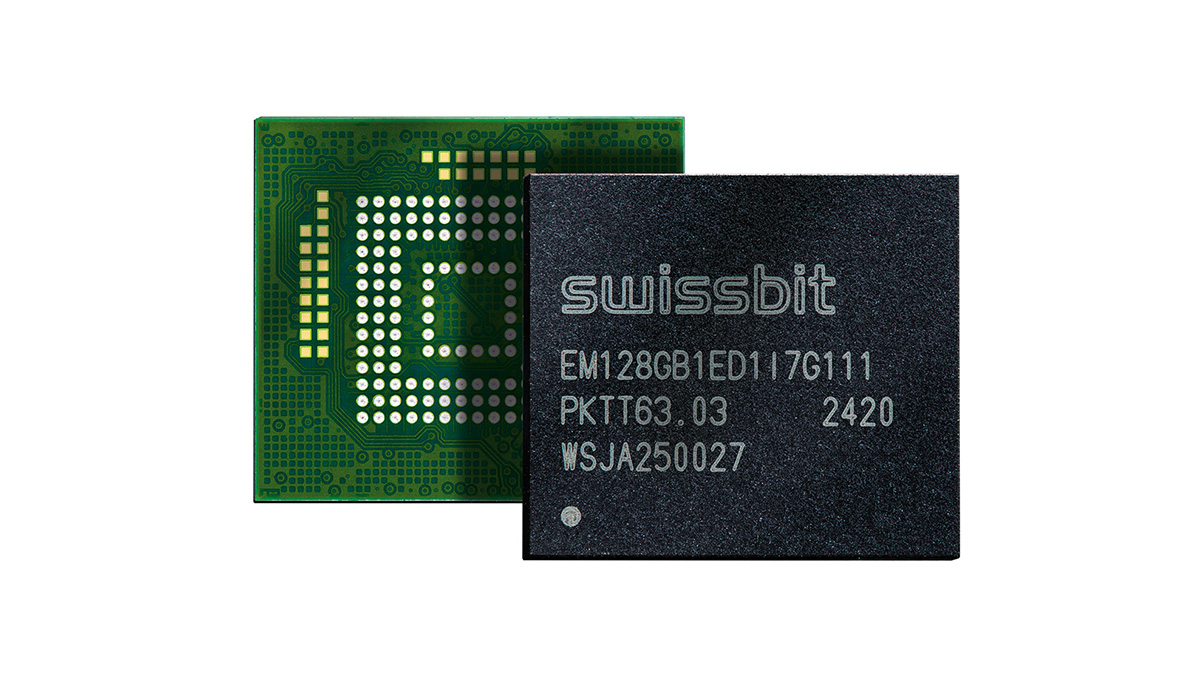The industry is vying for ever-increasing gigabyte capacities. And yet there are countless applications that only require a fraction of this storage space. Typical applications include green IIoT technologies like charging stations, smart meters, and PV inverters, for which only a small amount of memory is required to run boot software or to communicate with cloud applications. In response to these demands, Swissbit is expanding its range of memory solutions with the introduction of e.MMC and SD memory cards with small capacities ranging from 4 to 8GB. They are based on 3D-TLC-NAND and optimised for power failure protection, industrial reliability, and high endurance. Consequently, they rival the performance of more expensive SLC models and outperform corresponding MLC variants.
The proliferation of IIoT technologies is particularly evident in smart cities. Key factors here include smart meters, controllers for intelligent building management, or generating and using sustainable energy through charging stations.
For the most efficient operation of these green IoT applications, Swissbit now offers targeted small-capacity storage media. With capacities ranging from 4 to 8GB, these are ideally suited as boot media or for data logging of small amounts of data, without sacrificing performance or durability. The models of the EM-30 and S-56(u) series, which are available as an embedded component in the form of an e.MMC or as flexible, interchangeable SD memory cards, offer maximum reliability due to proven firmware architecture. They also guarantee 100% data security.
Swissbit EM-30 and S-56(u) series
The EM-30 product series (153 ball BGA) complies with e.MMC-5.1 specifications and is fully backward compatible. It is designed for an extended temperature range of -40°C to +85°C and is suitable for use in harsh environmental conditions. Based on durable industrial-grade 3D-TLC-NAND and with storage capacities ranging from 4GB to 8GB, the range offers sequential data rates of up to 280MB/s read and 120MB/s write, as well as 11k IOPS random read and 16k IOPS random write.
The S-56(u) SD and microSD memory cards attain sequential read and write data rates of 95 MB/s and 74 MB/s, respectively. The cards are optimised for high-performance applications with random read IOPS of 2,200 and random write IOPS of 1,300. With advanced over-provisioning and pSLC technology, the S-56 series offers the highest endurance for write-intensive workloads. Combined with up to 100,000 PE cycles, its endurance for small data logging even surpasses that of an SLC card for the first time.
Other typical applications for small-capacity flash memory include white goods, payment devices and point-of-sale systems, industrial control systems, and medical diagnostic and patient monitoring devices.
There’s plenty of other editorial on our sister site, Electronic Specifier! Or you can always join in the conversation by commenting below or visiting our LinkedIn page.










